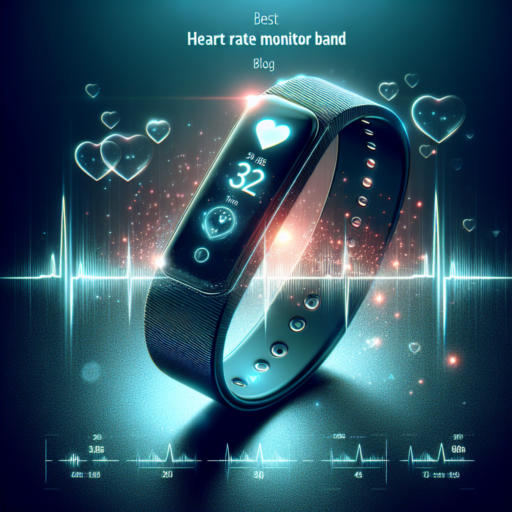Why is my Apple Watch not recording my wrist temperature?
Having issues with your Apple Watch not recording your wrist temperature can be bothersome, especially when relying on this feature for health tracking or analysis. There are several reasons that could be causing this problem, which range from the settings within your device to external factors affecting its sensors.
Check for Software Updates
One common reason your Apple Watch might not be recording wrist temperature accurately is outdated software. Apple frequently releases updates to enhance the performance and fix bugs in their devices. Ensuring that your watchOS is up to date is crucial for optimal functioning, including the accuracy of health metrics like wrist temperature.
Sensor Obstructions
Another factor to consider is potential obstructions blocking the sensor on your Apple Watch. Skin oils, sweat, or improper positioning of the watch on your wrist can interfere with the temperature sensor’s ability to record data accurately. Cleaning your Apple Watch regularly and wearing it according to the recommended guidelines can mitigate this issue.
Environmental Conditions
Lastly, the environmental conditions surrounding you can impact the Apple Watch’s ability to record wrist temperature. Extremely cold or hot ambient temperatures may affect the sensor’s readings. Being aware of these conditions and understanding their potential impact on your device can help in troubleshooting and managing your expectations regarding its performance.
How do I turn on wrist temperature on my Apple Watch?
Turning on the wrist temperature feature on your Apple Watch is a straightforward process. This functionality, designed to monitor your body temperature from your wrist, offers insightful health data, particularly useful for sleep tracking and overall wellness monitoring. Below, you’ll find the necessary steps to enable this feature and make the most out of your Apple Watch’s health monitoring capabilities.
Accessing the Health App
First, open the Health app on your iPhone, which is paired with your Apple Watch. Navigate to the «Browse» tab situated at the bottom right of the screen, and then scroll to find the «Body Measurements» section. Here, you should see the option for «Body Temperature,» which you need to select in order to proceed with enabling the wrist temperature monitoring.
Enabling Wrist Temperature on Apple Watch
Upon selecting the «Body Temperature» option, you’ll be guided to a setup or configuration screen, depending on whether you’ve previously accessed this feature. In this section, look for the setting that mentions wrist temperature or a similar term. Toggle the switch to turn it on, ensuring that your Apple Watch begins tracking your wrist temperature data. It’s worth noting that for accurate readings, your Apple Watch should be worn snugly on your wrist, especially overnight.
To optimize the feature’s performance, regularly updating your Apple Watch to the latest software version is advisable as Apple frequently introduces enhancements and bug fixes that can improve the accuracy of health-related features. Remember, the wrist temperature data can offer valuable insights into your health and wellness routines, aiding in better understanding your body’s patterns and potential needs.
Why isn’t the temperature showing on my Apple Watch?
If you’re glancing at your wrist and finding the temperature missing on your Apple Watch, you’re not alone. This common concern has a variety of potential explanations ranging from settings adjustments to location services issues.
Location Services Permissions
One of the primary reasons your Apple Watch might not display the temperature is if Location Services are disabled for the Weather app. The Weather app needs access to your location to provide accurate weather updates, including the temperature. To check this, go to the Settings app on your iPhone, tap Privacy, select Location Services, and then ensure that Location Services are turned on for the Weather app.
Weather App Complication
Another factor to consider is whether the Weather app complication is properly set up on your watch face. If the temperature is not showing, it might be due to the complication not being added or needing an update. By customizing your watch face and selecting the Weather complication, you can ensure that the temperature display is included.
In summary, if the temperature is not displaying on your Apple Watch, reviewing Location Services permissions and setting up the Weather app complication correctly can often resolve the issue. Checking these settings can quickly bring back your temperature updates to your wrist.
No se han encontrado productos.
How do I get my Apple Watch to read my body temperature?
Getting your Apple Watch to read your body temperature might appear challenging since, as of the latest updates, Apple Watches do not have the built-in capability to directly measure body temperature. However, there’s a workaround that involves the use of third-party apps and external devices that can sync with your Apple Watch, providing a comprehensive health monitoring system right on your wrist.
Utilizing Third-Party Apps
Research and download reputable third-party health apps from the App Store that are compatible with your Apple Watch. Look for apps that can track body temperature and ensure they support syncing with external temperature sensing devices. Compatibility with your version of the Apple Watch and iPhone is crucial for seamless integration.
Connecting External Devices
After installing the chosen app, the next step is to connect an external temperature sensor. These sensors should be Bluetooth-enabled for wireless connectivity to your Apple Watch. Follow the manufacturer’s instructions for pairing the device. Once paired, your temperature readings can be monitored directly through the app on your Apple Watch.
Always make sure that the external device you choose is accurate and reliable. Maintaining the health and safety of users is paramount, so opting for medically approved temperature sensors is recommended. Through these steps, monitoring your body temperature using your Apple Watch becomes a convenient addition to your health-tracking regime.


